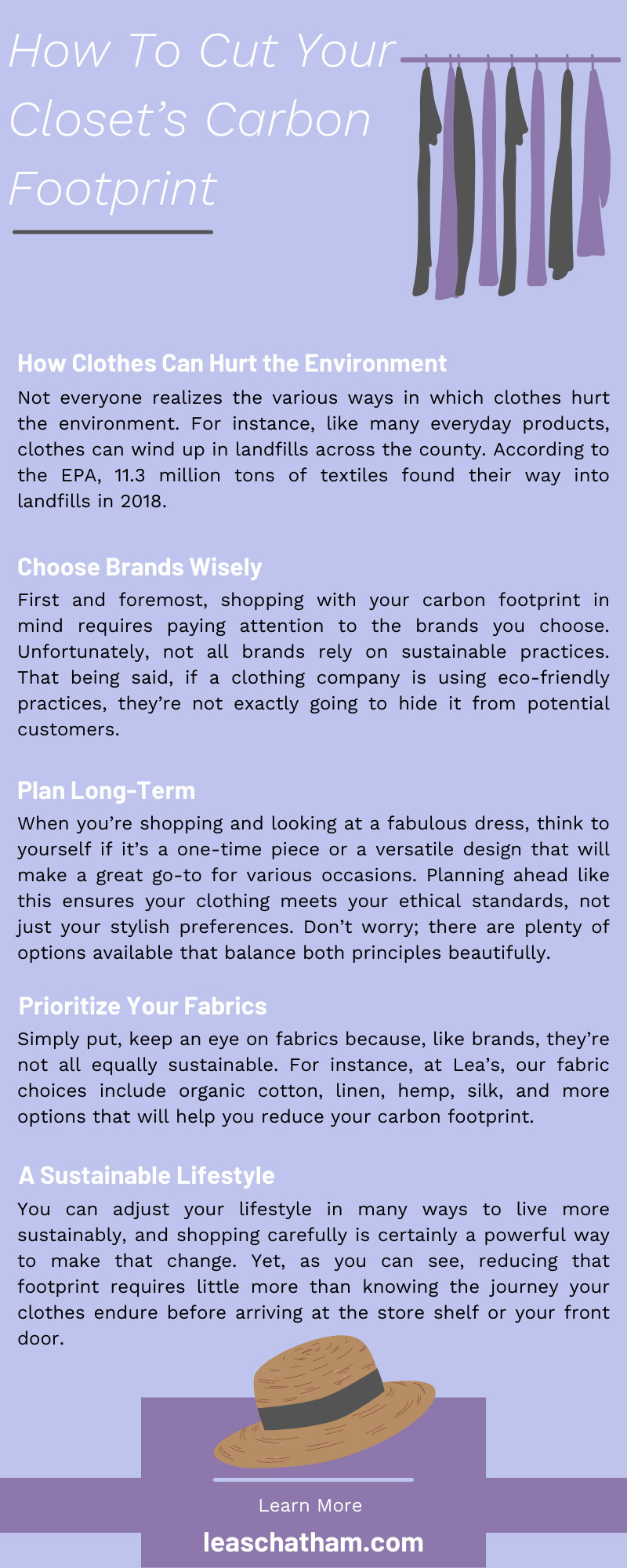Many folks love fashion but also want to live an eco-friendly lifestyle. If you’re familiar with the fashion industry’s impact on the environment, that might sound like a stressful pairing of passions. Thankfully, you can have both easily. Apparel options differ in many ways, with their production being among the top. After all, from production to disposal, there are various steps in a piece of clothing’s lifespan that can hurt the environment.
Although these hazardous processes are prevalent, sustainable fashion options are out there, prioritizing aesthetics and ethics wonderfully. So, how do you begin the shift into a greener fashion style? If you want to learn how to cut your closet’s carbon footprint substantially, browse the article below. To start this discussion, let’s address how exactly fashion production impacts our environment.
How Clothes Can Hurt the Environment
Not everyone realizes the various ways in which clothes hurt the environment. For instance, like many everyday products, clothes can wind up in landfills across the county. According to the EPA, 11.3 million tons of textiles found their way into landfills in 2018.
Luckily, as you’ll learn below, there are ways to think long-term about clothing, ensuring nothing in your closet goes to waste. That might sound ambitious but cutting your closet’s carbon footprint isn’t as challenging as you might expect.
Another way that apparel production impacts the environment pertains to what happens before it reaches a landfill. The toll that fashion takes on the environment is no secret, from high water consumption to ample wastewater production. Suffice it to say, fashion can have a much more substantial impact on the environment than you might realize. Thankfully, there are simple and effective alternatives. So, without further ado, let’s detail exactly how you can start reducing your closet’s carbon footprint.
Choose Brands Wisely
First and foremost, shopping with your carbon footprint in mind requires paying attention to the brands you choose. Unfortunately, not all brands rely on sustainable practices. That being said, if a clothing company is using eco-friendly practices, they’re not exactly going to hide it from potential customers. When a brand focuses on reducing its carbon footprint, this principle is often at the forefront of its marketing message.
So, simply put, browse around a brand’s website to learn about their practices. A quick trip to their site should prove the best way to learn everything you need to make the right purchase, or at least have the information necessary to reach out and learn more. For instance, at Lea’s, we don’t hide the fact that our clothing options are sustainable and stylish.
Even if you’re out and about in a clothing store, pop onto your phone and do a quick Google search to find a brand’s site; simple steps like these will help you discover those fabulous forever pieces. As you can see, learning more about brands is very simple. Next, let’s address something that takes a bit more precision and careful planning: the longevity of your wardrobe.
Plan Long-Term
If you want to shop for ethical clothing, don’t look at options such as fast fashion. Instead, look for apparel that can be forever pieces; something you can always turn to for a stylish, sustainable, and comfortable choice. For instance, consider the different occasions you can use any given piece of apparel for over the years.
When you’re shopping and looking at a fabulous dress, think to yourself if it’s a one-time piece or a versatile design that will make a great go-to for various occasions. Planning ahead like this ensures your clothing meets your ethical standards, not just your stylish preferences. Don’t worry; there are plenty of options available that balance both principles beautifully.
For example, CP Shades clothing is stunning, cozy, and absolutely sustainable. CP Shades creates their incredible designs in the U.S. using facilities running entirely on solar energy. Plus, they rely on 100 percent natural fabrics, including linen, silk, and cotton. Speaking of which, let’s dig a bit deeper into one of the most important facts to consider when buying sustainable apparel: the fabric.
Prioritize Your Fabrics
As mentioned above, clothing impacts the environment as it moves through the production chain. Thus, one of the many details that vary between clothing pieces is the fabric. Of course, fabric varies in color and texture, but that’s not all. Considering these materials is essential because fabric production can be demanding on the environment.
Simply put, keep an eye on fabrics because, like brands, they’re not all equally sustainable. For instance, at Lea’s, our fabric choices include organic cotton, linen, hemp, silk, and more options that will help you reduce your carbon footprint.
Beyond being cozy and beautiful, these fabrics are natural and don’t require the chemical processing and other harmful processes that less sustainable options need before arriving at your closet. Toxic chemicals and pesticides can hurt the environment, but materials like organic cotton avoid these hazardous processes entirely. Finally, let’s break down how you can use this information to start living a more sustainable lifestyle without losing access to unique and stylish clothing.
A Sustainable Lifestyle
Now that you know how to cut your closet’s carbon footprint, you can begin living a more sustainable lifestyle today. You can adjust your lifestyle in many ways to live more sustainably, and shopping carefully is certainly a powerful way to make that change. Yet, as you can see, reducing that footprint requires little more than knowing the journey your clothes endure before arriving at the store shelf or your front door. In some situations, the journey puts stress on the environment in substantial ways, but that doesn’t always have to be the case.
Plus, how we treat our clothes once they enter our closet impacts how they affect the environment. Instead of shopping for one-time clothing you’re going to toss out quickly, invest in forever pieces that are versatile and reliable.
If you’re passionate about fashion and eco-friendliness, consider finding vendors who carry various sustainable brands. That way, you always have somewhere to turn to when you want a new forever piece for your closet. Once you browse the sustainable clothing options available, you’ll soon find that you won’t have to sacrifice stunning designs for a better environmental effect.


